I just started one of my all-time favorite units to teach for science- the solar system! In this post, I will show you how I engage my students at the start of the unit (setting the stage for learning), integrate reading and writing, and use a variety of different learning modalities (visual, auditory, kinesthetic, and tactile).

I have a great way set the stage for learning, and build anticipation and excitement about the unit solar system science unit. Prior to starting your unit, place an astronaut trainee letter (an official letter from NASA!) in a special star stamped manila envelope. You won’t believe how excited your students will be when they come to school and find them on their desk! From here on out, students are astronaut trainees and I (formerly known as the teacher) am now their crew captain-very official, with a name badge and all!
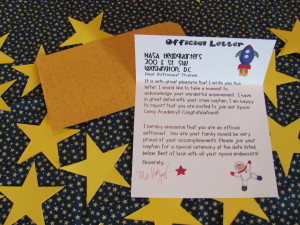
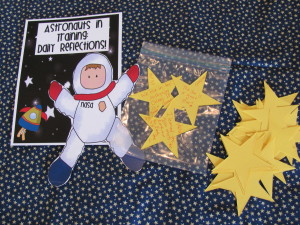

I have such a hard time fitting in science with all the other subjects that I have to teach. One strategy that I use is integrating reading and writing with my science topics. Here is one idea of how I incorporate reading strategies when teaching about the different constellations. I begin by asking the students to think about what they already know about constellations. This prior knowledge is called a child’s schema- and it includes all their prior experiences about the topic. All my students, or should I say, junior astronauts, use their schema (brain file!) to share what they already know about constellations.
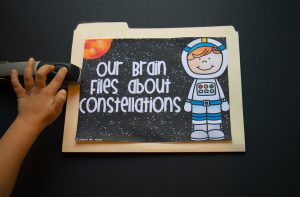
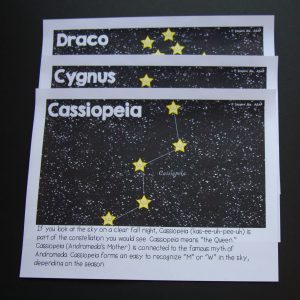
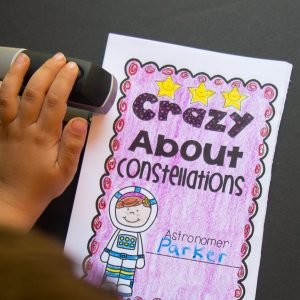
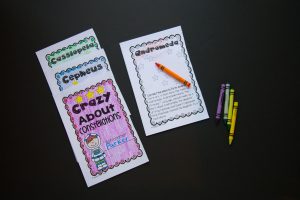
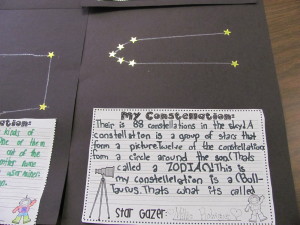
All junior astronauts must learn to work with other junior astronauts- very important here on Earth and in outer space! Students work in groups to write acrostic poems and present their them to the class.
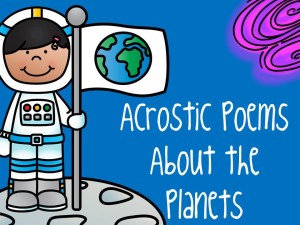

Crew captains will definitely have the attention of their junior astronauts when they begin the next lesson with these yummy looking Milky Way bars on display!
***Important Update*** Since writing this email a few years ago, my district adopted a strict no-food policy. We must have permission slip with parent approval for every food item we use in school. I recommend that you check your district’s food policy and get parent permission if needed, prior to use any candy or gum with your students!
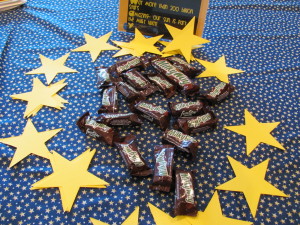
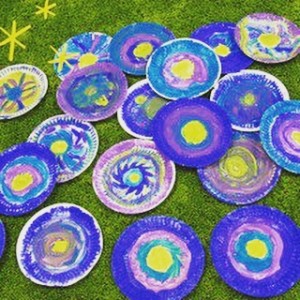


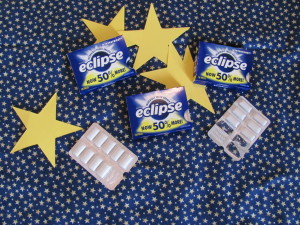

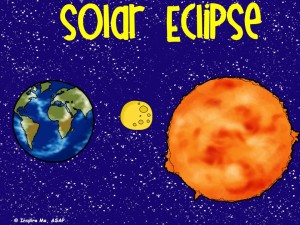
Astronauts in training must know about how the Moon orbits the Earth and how the Earth orbits the Sun! In this hands-on, concrete approach to teach this concept, students manipulate the Moon orbiting Earth and Earth orbiting the Sun.
To keep things interesting, I passed out some Orbit gum as students were hard at work!

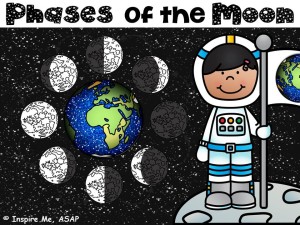
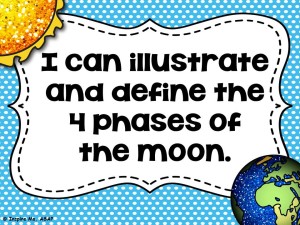
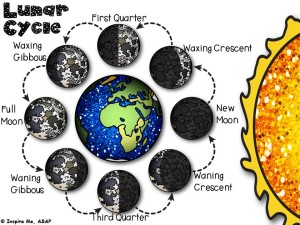
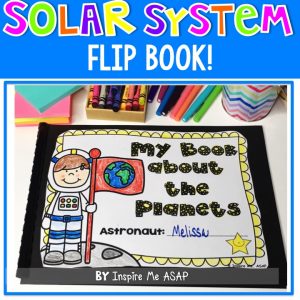
– All about the author
– Table of contents
– Index
– Glossary

[videojs_video url=”https://inspiremeasap.com/wp-content/uploads/2012/02/IMG_6844.mp4″]
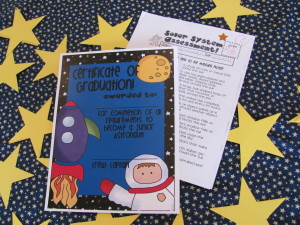
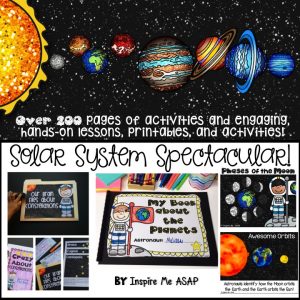
Here is what is included in the Solar System Unit:
1. Solar System Acrostic poems
Astronauts work in cooperative groups to research, write, and present acrostic poems about the planets!
2. Awesome orbits
Astronauts learn how the Moon orbits the earth and the earth orbits the sun, in a fun, interactive lesson! Pictures, directions with an example, a colorful poster and an awesome orbits flip book are included in this file.
3. Blast off your Space Unit
Cute and unique ideas to get your junior astronauts excited and motivated to learn about the solar system and keep them engaged throughout the unit!

4. Crazy about constellations
Young astronauts begin by sharing their schema about constellations. As they read more about constellations, their schema expands. Young astronauts then make their own constellations- which makes a beautiful bulletin board display. This file includes many colorful posters- make sure you have a color printer available! Please see the preview for some images of this file!! :)Included:
– Resources for introducing schema to your young astronauts
– 13 posters of constellations to print and display
– Crazy about Constellations flip book (Students connect the stars to form the featured constellation)
– Writing template and art project idea for students to write about a constellation they learned about (makes a great bulletin board display!)Constellations featured in file:
– Ursa Major
– Ursa Minor
– Hercules
– Cygnus
– Cassiopeia
– Perseus
– Canis Major
– Canis Minor
– Draco
– Orion
– Pegasus
– Cephus
– Andromeda5. Exciting Eclipses
A fun and interactive way to learn about the difference between the solar and lunar eclipse!
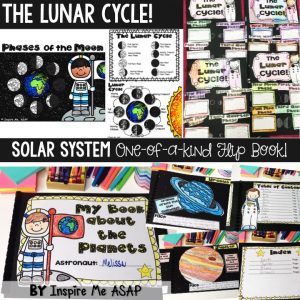
6. Galaxy Galore
A fun writing lesson and an art project- A fun writing lesson and art project for your junior astronauts! Students write an acrostic poem about the Milky Way and then create an awesome art project. (Paint is recommended but you can also use crayons!) This file includes pictures of the project in process and the finished project!
7. Solar System Assessment
Let your astronauts show you what they know and earn their way into the space academy with flying colors!
8. Solar System comparison
A great graphic organizer
9. Solar System flip book
Students make their own non-fiction flip book on the planets in the solar system. After learning about the planets and the solar system, students creatively publish their own non-fiction book about each planet.
Students use what they learned to write facts and add captions to each page about the 9 planets. Students then use their creativity to add these pages to their informational text:
– All about the author
– Table of contents
– Index
– Glossary

10. The Lunar Cycle
Students make a concrete example of the different phases of the moon: new moon, first quarter, full moon, third quarter. There is also an option for the 8 phases of the moon. File includes black and white/color copies for students and anchor charts.






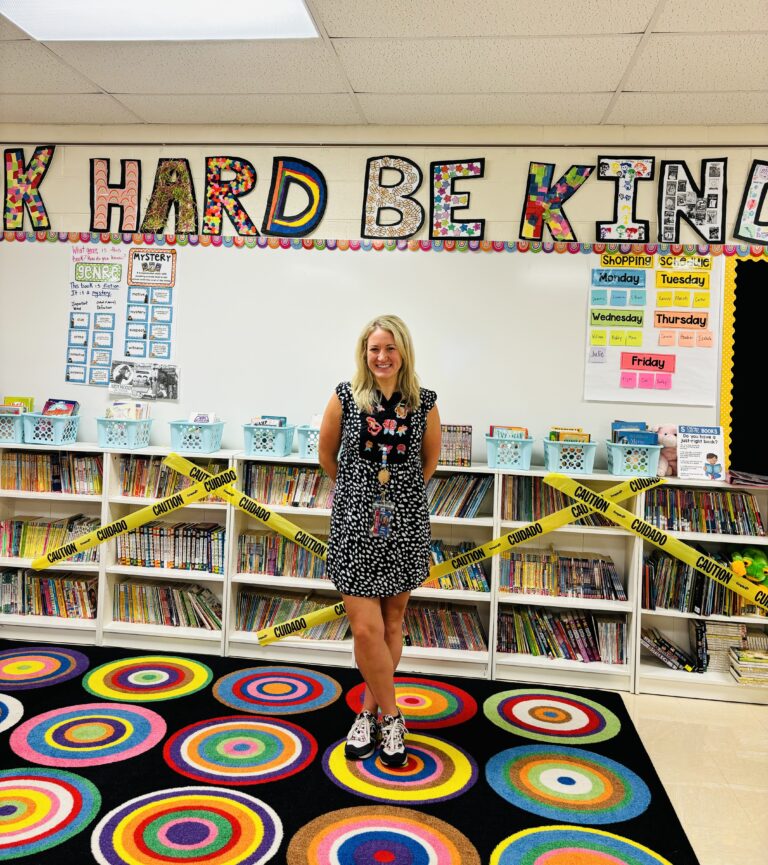



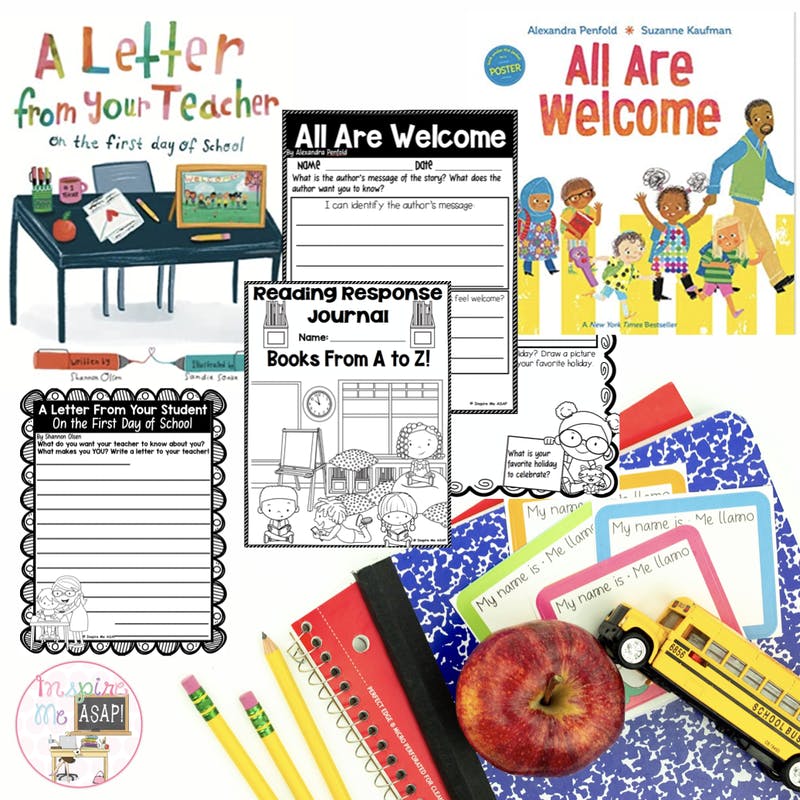
22 Responses
This looks absolutely fabulous! :)
Julia
julia.powell87@gmail.com
Looks amazing!!
❤ Sandra
Sweet Times in First
sweettimesinfirst@gmail.com
This will be perfect for my summer space class!
aprilcremer@gmail.com
Boo….a day late and a dollar short! Lol. I think I have purchased just about everything in your store, so adding this to my wish list.
Ashleybowlesreed@hotmail.com
Looks great! =)
Jennifer
First Grade Blue Skies
Love it!
This is fantastic!
Jennifer
jenniferlalsip(at)yahoo(dot)com
The First Grade Dream
WOW! So many activities! Thank you so much for sharing all your creativity!
Melanie
First Grade Brain Sprinkles
we are learning about this now. I am a final intern! I would LOVE THIS KIT! I graduate in MAY!
my email is
meganfranco@mail.usf.edu
:)
Holy Space! lol! Looks great!
♥ Jen
The Teachers' Cauldron
This is AWESOME!!! Too bad I am a few emails too late:( emmyjo09@yahoo.com
Emily
Thanks so much for it all! I was trying to find a way to celebrate the anniversary on John Glenn's space walk and landing…. This is perfect!!!! I am a follower and look forward weekly on ideas, activitiesto inspire my class. You both are out of this world awesome!!!! Thanks for being you and sharing! sharon.washington96@yahoo.com
This looks amazing! Thank you for your brilliant ideas :)
Lisa :)
Made In The Shade In Second Grade
I loved this post. Our solar system unit is my absolute favorite of the year. I'm heading over to check yours out on TpT next. Thanks for sharing!
Christi =)
Ms. Fultz's Corner
This is great!! I was looking for something fun and new to do with my students!
misty.sizemore@lcsbonline.org
This is amazing! I love all your resources! Thanks for the great ideas! I teach third grade and we have a huge unit on Solar System!
http://www.3teacherchicks.blogspot.com
Hi This is amazing! I love how it looks and very interested in using it with my special ed students.
Great unit.
lw2626@gmail.com
This comment has been removed by the author.
Love it, Love it, Love it! I got so excited a few minutes ago that I forgot to leave my e-mail! Oops! Can't wait to get started.
cindyannanderson@gmail.com
Is there any way to just get the official NASA letter. I'm a student teacher and do not have the money to buy the whole unit (even though it looks wonderful) but would love the official letter. We are taking a trip to a NASA center in April and I this would be a great lesson to teach before we go! I love this activity though! barlow_bm@wvwc.edu
Wow! This looks fantastic. Nice work girls!!
An interesting discussion is worth comment. I think that you should write more on this topic, it might not be a taboo subject but generally people are not enough to speak on such topics.solar water heater systems